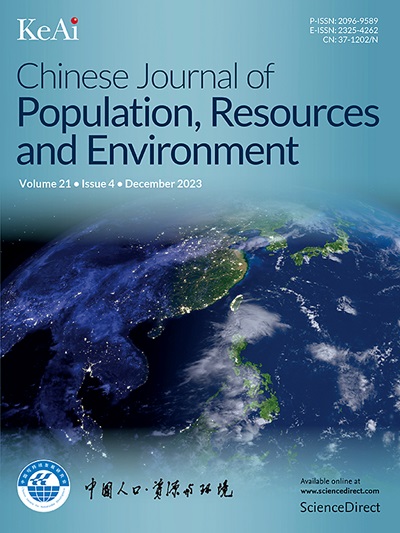Research on the impact of manufacturing servitization on environmental pollution: spatial econometric analysis of sulfur dioxide based on 284 prefecture-level cities
IF 4.8
4区 环境科学与生态学
Q2 ENVIRONMENTAL STUDIES
Chinese Journal of Population Resources and Environment
Pub Date : 2024-09-01
DOI:10.1016/j.cjpre.2024.09.005
引用次数: 0
Abstract
Using China’s regional input–output table, the paper constructs indicators of manufacturing servitization, matches manufacturing servitization at the regional level with city data, and uses spatial econometrics to empirically analyze the impact of manufacturing servitization on urban sulfur dioxide () emissions within the classical Environmental Kuznets Curve (EKC) framework. The results show that manufacturing servitization can reduce emissions. Producer servitization and consumptive services can both significantly reduce industrial emissions. Transportation and warehousing servitization, information servitization, leasing, and commercial servitization, technology research and development servitization significantly reduce emissions; technology research and development servitization, in particular, have the largest influence coefficient, while the reduction effect of servitization in the wholesale and retail and finance sectors is not significant. The study also found that servitization reduced the emissions through technological innovation and industrial structure upgrading.
制造业服务化对环境污染的影响研究:基于 284 个地级市的二氧化硫空间计量经济学分析
本文利用中国区域投入产出表,构建了制造业服务化指标,将区域层面的制造业服务化与城市数据进行匹配,并在经典的环境库兹涅茨曲线(EKC)框架下,利用空间计量经济学实证分析了制造业服务化对城市二氧化硫(SO2)排放的影响。结果表明,制造业服务化可以减少二氧化硫的排放。生产服务化和消耗性服务都能显著减少工业二氧化硫排放。运输仓储服务化、信息服务化、租赁和商务服务化、技术研发服务化能明显减少二氧化硫排放;其中技术研发服务化的影响系数最大,而批发零售和金融业的服务化减排效果不明显。研究还发现,服务化通过技术创新和产业结构升级减少了二氧化硫排放。
本文章由计算机程序翻译,如有差异,请以英文原文为准。
求助全文
约1分钟内获得全文
求助全文
来源期刊

Chinese Journal of Population Resources and Environment
ENVIRONMENTAL STUDIES-
CiteScore
4.30
自引率
1.10%
发文量
791
审稿时长
79 days
期刊介绍:
The Chinese Journal of Population, Resources and Environment (CJPRE) is a peer-reviewed international academic journal that publishes original research in the fields of economic, population, resource, and environment studies as they relate to sustainable development. The journal aims to address and evaluate theoretical frameworks, capability building initiatives, strategic goals, ethical values, empirical research, methodologies, and techniques in the field. CJPRE began publication in 1992 and is sponsored by the Chinese Society for Sustainable Development (CSSD), the Research Center for Sustainable Development of Shandong Province, the Administrative Center for China's Agenda 21 (ACCA21), and Shandong Normal University. The Chinese title of the journal was inscribed by the former Chinese leader, Mr. Deng Xiaoping. Initially focused on China's advances in sustainable development, CJPRE now also highlights global developments from both developed and developing countries.
 求助内容:
求助内容: 应助结果提醒方式:
应助结果提醒方式:


